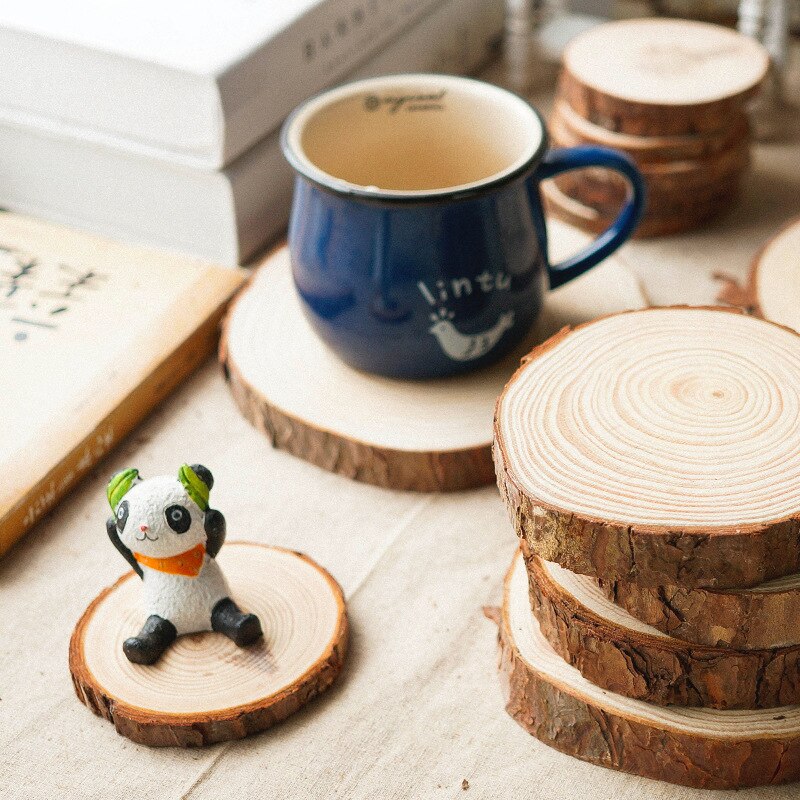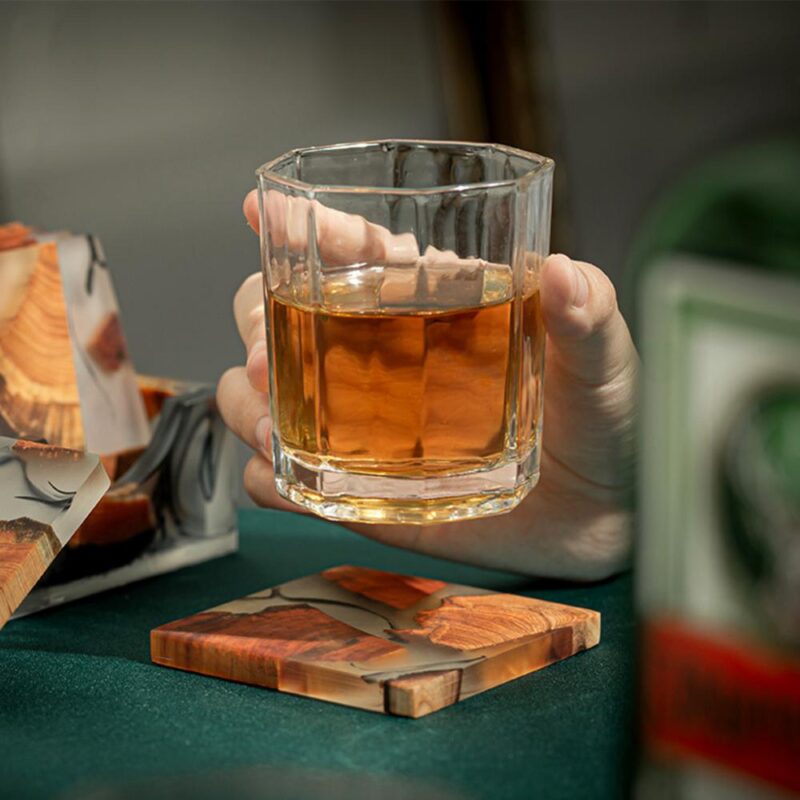Cup Coaster
From Vintage to Modern: A History of Cup Coaster Designs
Cup coasters, seemingly mundane yet indispensable, have a rich history intertwined with the evolution of human lifestyle and design preferences. From their humble beginnings as practical solutions to prevent furniture damage to becoming statement pieces in interior design, cup coasters have come a long way. In this blog post, we embark on a journey through time, exploring the fascinating evolution of cup coaster designs from vintage classics to contemporary marvels.
The Early Days: The concept of using coasters to protect surfaces from beverage stains dates back centuries. Early civilizations, including the ancient Egyptians and Greeks, utilized rudimentary materials like stone or wood to serve this purpose. These early coasters were more functional than decorative, primarily serving utilitarian needs.

Victorian Elegance: The Victorian era marked a significant shift in coaster design, with elegance and sophistication taking center stage. Ornate coasters crafted from materials such as silver, brass, or porcelain became popular among the aristocracy. These coasters often featured intricate designs, engraved patterns, and sometimes even personalized monograms, reflecting the owner’s status and taste.
Art Deco Influence: The early 20th century saw the rise of the Art Deco movement, characterized by its geometric shapes, bold colors, and lavish ornamentation. This period brought about a revolution in coaster design, with artists and designers experimenting with new materials and forms. Glass coasters adorned with geometric motifs, chrome-plated coasters with sleek lines, and Bakelite coasters in vibrant hues became emblematic of the Art Deco style.
Mid-Century Modern: As the world recovered from the ravages of World War II, a new design ethos emerged – Mid-Century Modernism. Characterized by simplicity, functionality, and an emphasis on clean lines, Mid-Century coaster designs mirrored the aesthetic principles of the era. Wood, plastic, and laminates were favored materials, with minimalist designs that celebrated the beauty of natural grain and texture.

Pop Culture Phenomenon: The latter half of the 20th century witnessed the integration of pop culture into coaster design. Coasters featuring iconic logos, cartoon characters, and movie themes became popular collectibles, appealing to a broader audience beyond traditional enthusiasts. These novelty coasters added a playful touch to home décor and served as conversation starters during social gatherings.
Contemporary Innovations: In the 21st century, coaster design has embraced innovation, blending form and function in exciting new ways. Sustainable materials like bamboo and cork are increasingly favored, reflecting growing environmental consciousness. Furthermore, technological advancements have led to the emergence of smart coasters equipped with features such as temperature control and wireless charging capabilities, catering to the needs of modern consumers.
Conclusion: From their utilitarian origins to becoming symbols of style and personality, cup coaster designs have evolved in tandem with changing cultural, social, and technological landscapes. Whether it’s a vintage silver coaster evoking nostalgia for a bygone era or a sleek, futuristic coaster boasting cutting-edge features, these humble accessories continue to play a vital role in our daily lives. As we look to the future, one thing remains certain – the journey of cup coaster design is far from over, with endless possibilities awaiting exploration.

